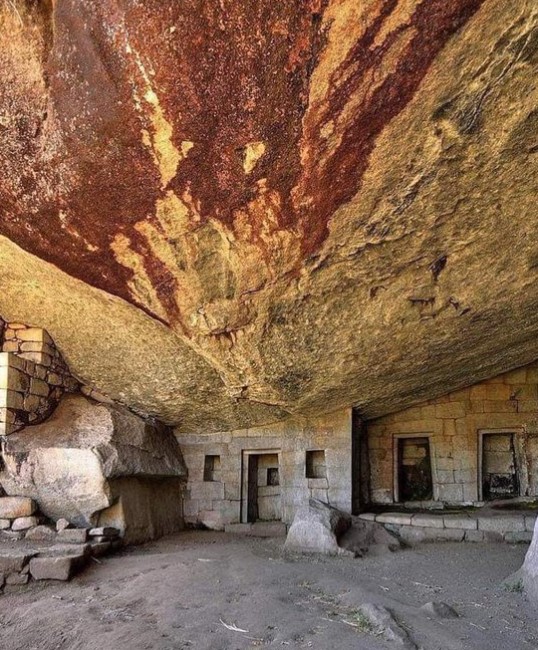The Temple of the Moon Machu Picchu is a historical Incan site located in Peru. The temple features a unique combination of stone masonry and a small, open-air cave. Despite its name, the purpose of the temple remains largely unknown, as with many other sites at Machu Picchu.
In the heart of the cave is a rock-carved throne, and there are steps that lead deeper into the cavern. There is speculation that the cave was used to house mummies. The Temple of the Moon has a rich history, dating back approximately 1500 years, and was rediscovered in 1936. The temple is located at a height of 390 meters below the summit of Huayna Picchu, on the northern side. The temple is a unique architectural marvel that showcases the skills of the Incan stonemasons.

The site comprises three main elements: a grandiose overhanging cave, a double-jamb doorway that rises to great heights, and several structures, one of which is another cave. The intricate stonework at the Temple of the Moon symbolizes the three realms of the Incan religion—the heavens, the earth, and the underworld—depicted by the condor, puma, and snake, respectively.
The temple boasts a massive entrance that stands 8 meters tall and 6 meters wide and is adorned with fake doors and six trapezoidal niches. The building is supported by a raised platform, 5 meters above the ground, that is surrounded by the rugged walls of the mountains. With doors measuring 1.60 meters in the front and 1 meter on the sides, this temple is truly a masterpiece of the Incan civilization.
According to an eyewitness travel guide, the Temple of the Moon was built over a period of 200 years, with six levels added one on top of the other. Today, this temple stands as a testament to the spiritual beliefs and architectural prowess of the ancient Incans.
The origin of the name Temple of the Moon is uncertain, and it is widely believed that it is arbitrary, like many other sites in Machu Picchu. Despite the lack of evidence, some speculate that the temple gets its name from the way moonlight shines inside the cave.
The exact purpose of the Temple of the Moon is not known, but it is believed to have been a place of worship for the gods. The fact that people lived in caves and that they were considered entrances for superstitious things adds to this theory. There is also a theory that it may have served as a royal tomb, a place of worship, and a lookout post. Additionally, some believe it to have been a place for sacrifices, as it has beautiful vaulted niches and empty trapezoids of typical Inca design, as well as a rock sculpted to resemble an altar. Others think it was a ceremonial bathing complex.
Reaching the Temple of the Moon from the summit of Huayna Picchu can be challenging, as the trail is very exposed and slippery in some parts. A few spots have a steel handrail cable for safety, but falls in some places can be severe. The trail that branches off from the main trail near the saddle is easier and safer but still presents some hazards. It takes at least 45 minutes to reach the temple from the lower trail and an hour from the summit down the alternate trail. The return journey also takes 45 minutes uphill and back to the main trail.
